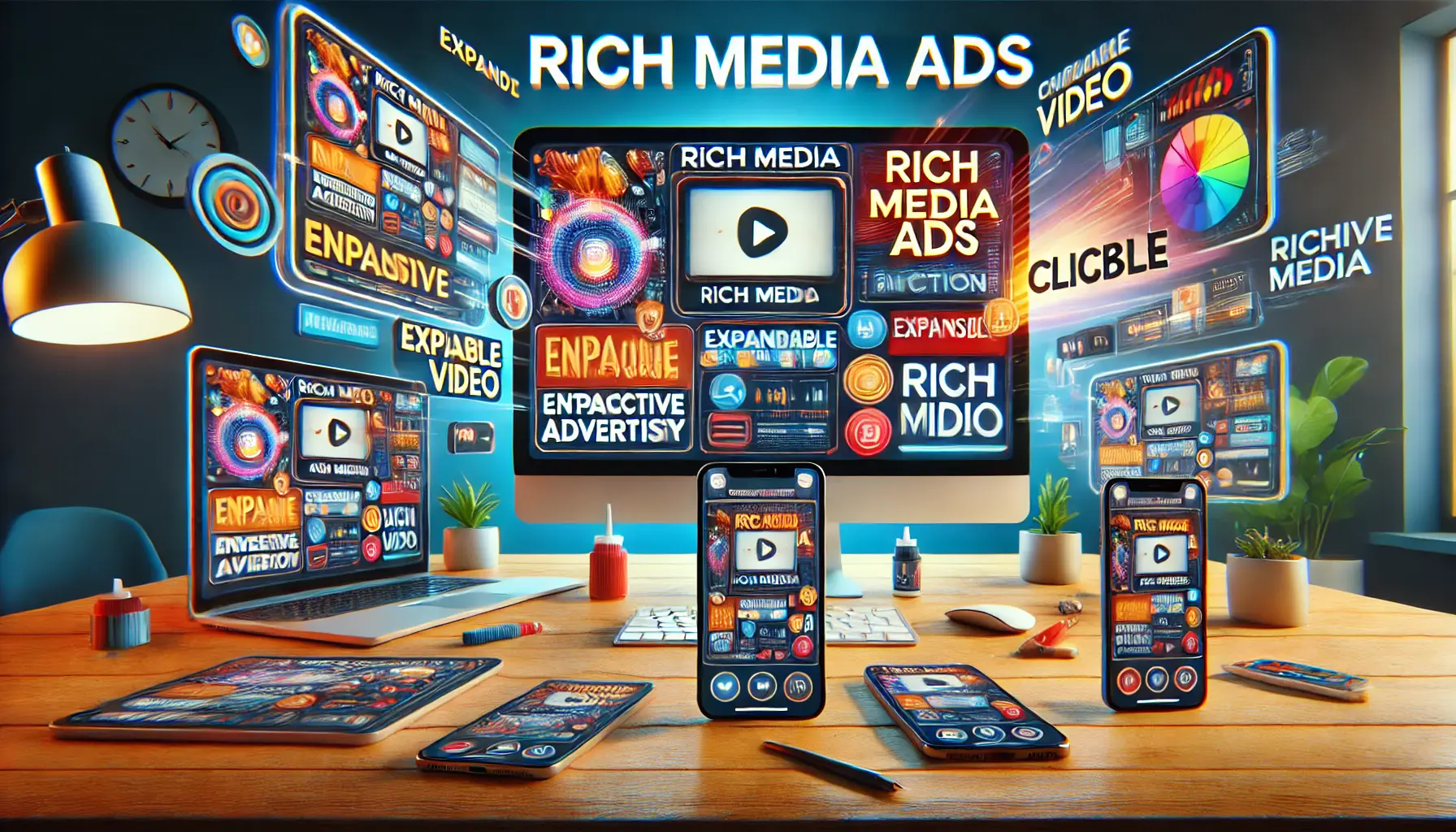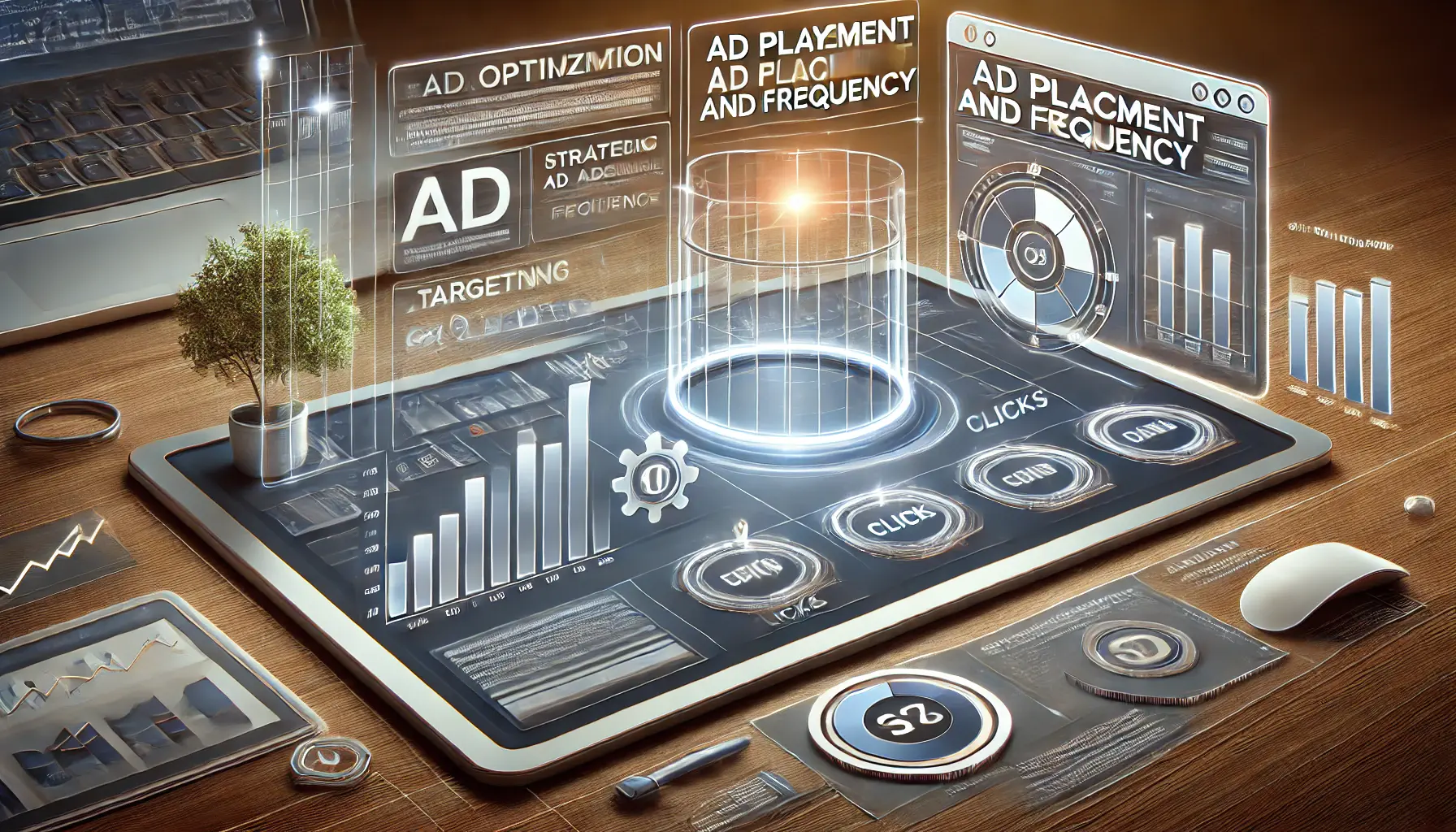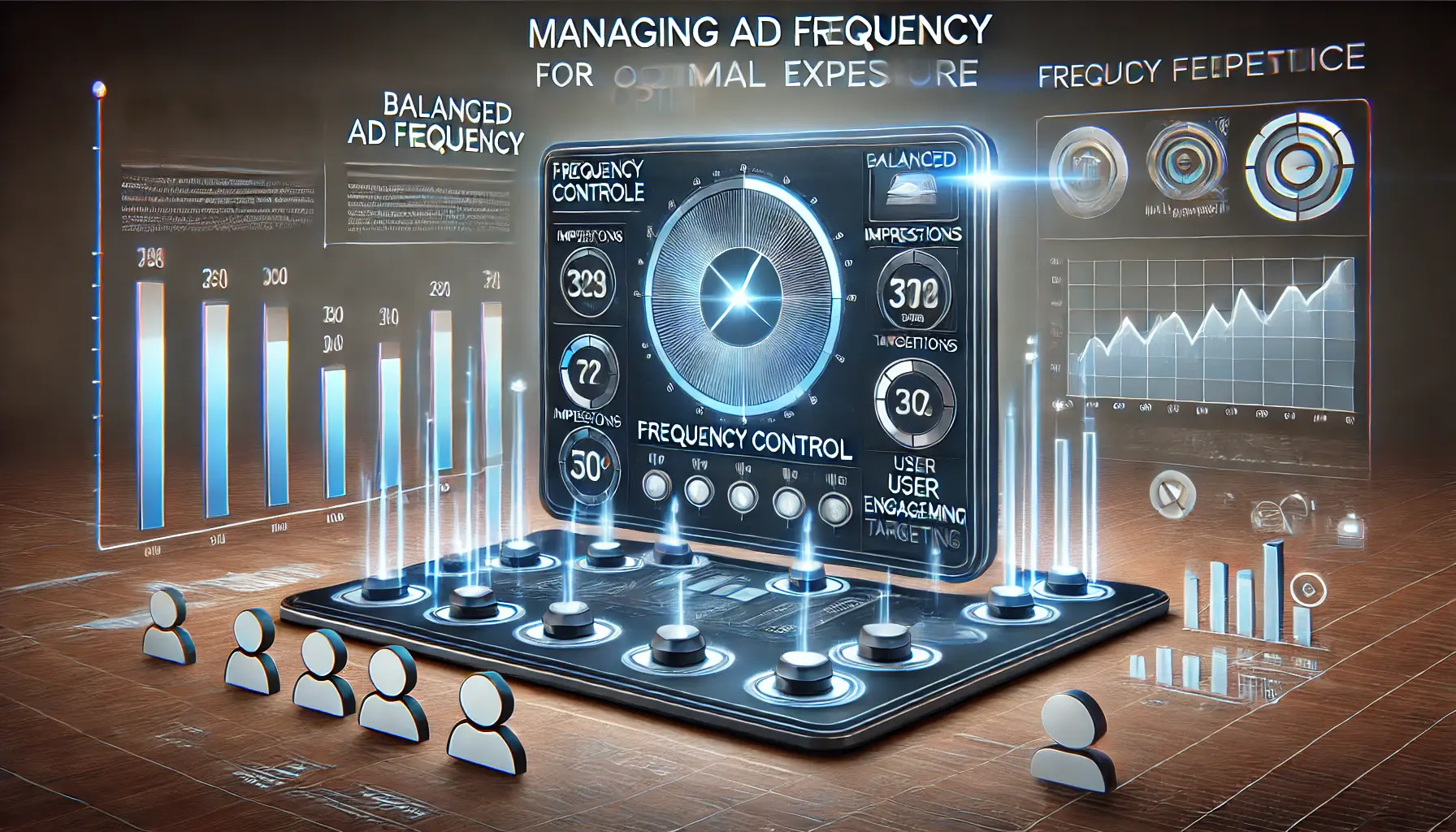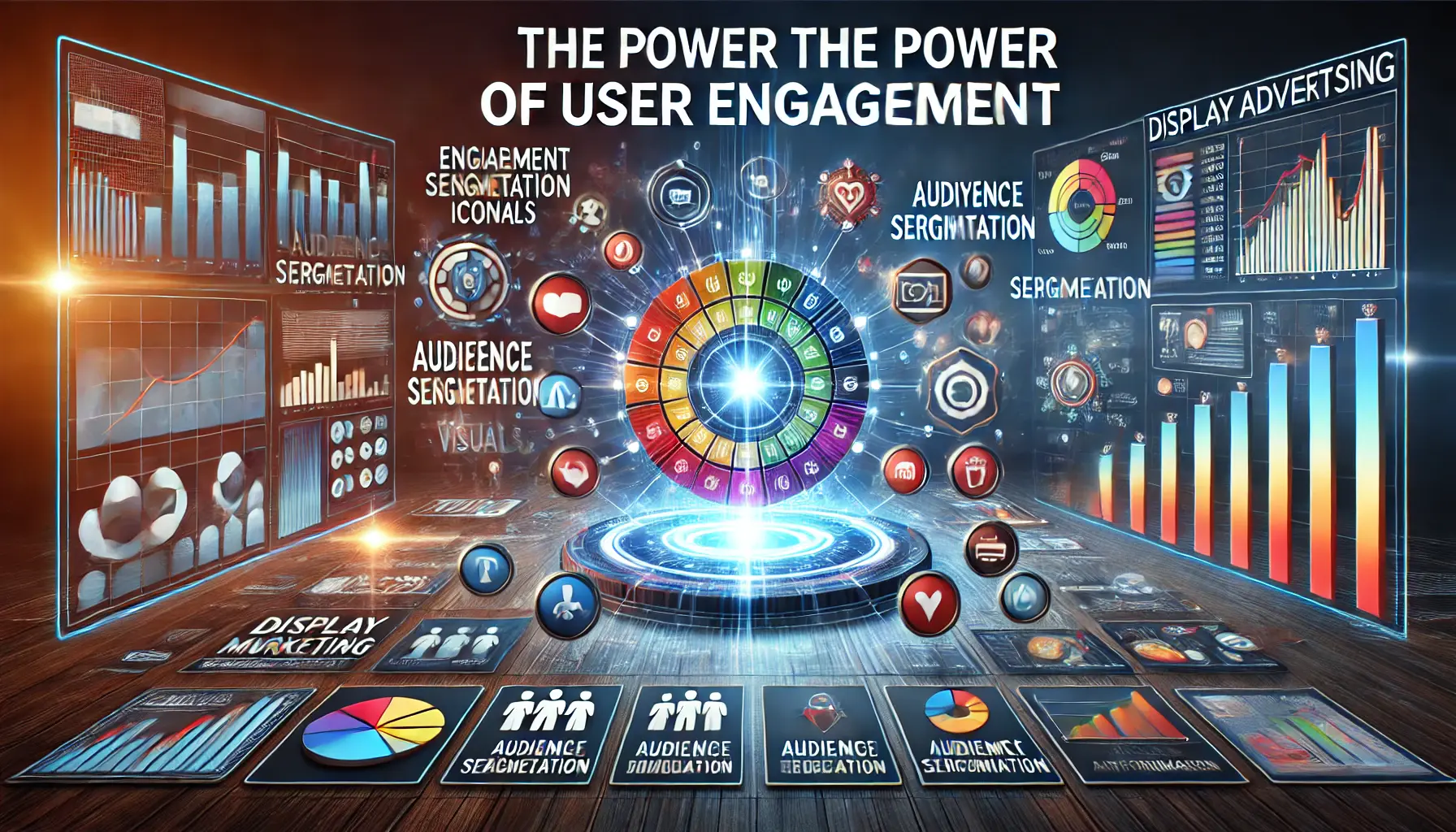In the fast-morphing world of digital marketing, catching user attention has truly become both an art and a science.
Display advertising is at the heart of this domain, serving as a visually engaging medium to connect brands with their target audience.
However, success in display advertising goes beyond impressionsThe number of times an ad is displayed to users. and clicks; it involves fostering meaningful user engagement.
In this article, we’ll explore six highly effective techniques to enhance user engagement in display advertising, equipping you with actionable strategies to make your campaigns stand out.
- Understanding User Engagement in Display Advertising
- Personalization Strategies to Enhance Engagement
- Interactive Advertising Formats to Drive User Engagement
- Optimization of Ad Placement and Frequency
- Refining Ad Content with A/B Testing
- Summary: Unlocking the Power of User Engagement in Display Advertising
- Frequently Asked Questions on User Engagement in Display Advertising
Understanding User Engagement in Display Advertising
User engagement in display advertising refers to how users interact with an ad, ranging from clicking on it to spending time exploring its content or performing a desired action like signing up or making a purchase.
Engagement is a critical metric because it reflects the ad’s ability to resonate with the audience and achieve campaign objectives.

A modern visual representation of user engagement metrics in digital advertising.
Defining User Engagement Metrics
Before diving into strategies, it’s essential to understand some key metrics that define user engagement:
- Click-Through Rate (CTR): The ratio of users who click on an ad to the total number of views by users.
- Time Spent: The amount of time users spend interacting with the ad or its landing page.
- Conversion Rate: The percentage of users who complete a desired action after engaging with the ad.
- Interaction Rate: Measures actions like hovering over, expanding, or interacting with ad elements without necessarily clicking through.

A dynamic representation of user engagement highlighting its significance in digital campaigns.
Importance of Engagement in Digital Campaigns
Why should you focus on user engagement?
Here are some compelling reasons:
- Higher ROI: Engaged users are more likely to convert, boosting your return on investment.
- Brand Recall: Interactive and engaging ads leave a lasting memory, thereby improving brand awareness and recall.
- Audience Insights: Engagement metrics help in understanding your audience’s preferences and behaviors.
- Improved Campaign Performance: Major platforms like Google Ads reward high-engagement-rate campaigns with better placements and lower costs.
Understanding these core elements sets the stage for applying effective user engagement techniques in your display advertising campaigns.
Next, we’ll dive into some personalization strategies that can help you captivate your audience and drive meaningful interactions.
Understanding user engagement is essential because it bridges the gap between ad impressions and meaningful interactions. Key metrics like CTR, interaction rate, and conversion rateThe percentage of users who take a desired action after interacting with an ad. help measure the effectiveness of display ads in resonating with the audience.

A depiction of advanced personalization strategies for enhancing user engagement in digital marketing.
Personalization Strategies to Enhance Engagement
In today’s digital landscape, users expect content that resonates with their individual preferences and behaviors.
Personalization in display advertising is a powerful tool to meet these expectations, leading to increased user engagement and higher conversion rates.
By tailoring ads to the specific interests and needs of your audience, you create a more relevant and compelling experience.

A graphical representation of behavioral targeting techniques in digital marketing.
Leveraging Behavioral Targeting
Behavioral targeting makes use of the analysis of user data, including browsing history, past purchases, and interaction patterns, in the process of serving ads targeted at the level of individual interests.
This approach ensures that users are exposed to ads relevant to their behaviors, thus increasing their likelihood of engagement.
To effectively put behavioral targetingA technique that uses data about users' behaviors to display relevant ads. into place:
- Data Collection: Collect data on the activities of users on your website and other digital touchpoints.
- Segmentation: Segment users into groups exhibiting similar behaviors or interests.
- Personalization of Ad Creatives: Create ad creatives that align with the preferences of the different user segments.
- Ongoing Analysis: Periodically monitor engagement metrics for further refinement of your targeting strategies.
By focusing on user behaviors, you can deliver ads that are more likely to capture attention and drive action.

A visualization of Dynamic Creative Optimization in action for personalized ad creation.
Leverage Dynamic Creative Optimization
Dynamic Creative Optimization (DCO) is a display ad technology that uses customer data to craft personalized ads for each user in real time.
The goal of DCO is to serve hyper-relevant content to the viewer.
DCO platforms respond to real-time data, such as location and browsing history, allowing advertisers to match ad creative with the viewer’s profile, behavior, and context.
To effectively take advantage of DCO:
- Asset Creation: Create multiple ad components such as images, headlines, and calls-to-action.
- Data Integration: Integrate user data that will determine which ad creative the platform serves to each user.
- Real-Time Assembly: Utilize DCO platforms to assemble and serve ads in real-time using user data as inputs.
- Performance Analysis: Continuously track the performance of ads to determine which combinations result in maximum engagement.
DCO provides the ability to create a more personalized ad experience for better user engagement and, thus, improved campaign performance.
By including these personalization strategies in your display advertising, you’ll have more creative and effective campaigns that will appeal to your audience much better.
Personalization is no longer optional—it’s a necessity. Tailored ad creatives, behavioral targeting, and the use of data-driven technologies like DCO ensure ads resonate deeply with users, driving engagement and conversions.

A representation of interactive advertising formats designed to enhance user engagement in digital campaigns.
Interactive Advertising Formats to Drive User Engagement
Capturing and sustaining user attention is essential in today’s fiercely competitive digital marketing landscape.
Interactive ad formats have emerged as a powerful tool to enhance user engagement in display advertising.
Such ads transform passive viewers into engaged participants by inviting users to participate actively, yielding higher interaction rates and improving overall campaign performance.

A visual depiction of rich media ads illustrating their interactive and engaging features in digital advertising.
Rich Media Ads – How to Implement
Rich media ads are sophisticated ad formats that leverage elements like video, audio, and interactivity to effectively hold users’ attention.
Unlike static ads, rich media ads can expand, float, or offer other interactive experiences, encouraging users to interact with the content.
To effectively deploy rich media ads:
- Incorporate Multi-Media Elements: Use videos, animations, and audio to create a dynamic ad experience.
- Enable User Interaction: Allow clickable areas, expandable sections, or interactive forms that facilitate user participation.
- Optimize for Performance: Ensure that rich media ads load quickly and perform smoothly across different devices and platforms.
- Track Engagement Metrics: Monitor how users are interacting with your ad to understand its effectiveness and make adjustments as needed.
By leveraging rich media ads, you can create more engaging and memorable experiences that resonate with your audience.

A creative depiction of gamification elements enhancing user engagement in advertising.
Incorporating Gamification Elements
Gamification involves adding game-like elements to ads to make them more interactive and enjoyable.
This strategy taps into users’ natural desire for competition and achievement, motivating them to participate in the ad content.
To add gamificationThe application of game-like elements to non-gaming contexts to increase engagement. elements to your ads:
- Design Interactive Challenges: Create mini-games or quizzes related to your product or service to engage users.
- Offer Rewards: Provide incentives such as discounts, exclusive content, or entries into a sweepstake for users who participate.
- Ensure Relevance: Align the gamified elements with your brand message and target audience to maintain coherence.
- Measure Engagement: Analyze user participation and feedback to refine your gamification strategy.
Incorporating gamification into your display advertising can drive user interaction and create a more memorable brand experience.
By adopting interactive ad formats, such as rich media ads and gamification, you can significantly boost user interaction and improve the effectiveness of your display ad campaigns.
Interactive ad formats like rich media ads and gamification not only capture attention but also engage users on a deeper level. These formats enhance the likelihood of interaction and brand recall.

A visual representation of strategies for optimizing ad placement and frequency in digital advertising.
Optimization of Ad Placement and Frequency
Strategic ad placements and their frequency determine the maximum user interaction in display advertising.
This is very important because placing ads in optimal locations and regulating how often ads appear to users can make a great difference in your campaigns.

An illustration of strategic ad positioning on a digital interface for optimal visibility and engagement.
Strategic Ad Positioning
The positions of ads on a webpage significantly affect whether or not users will view and interact with them.
To optimize ad positioning:
- Above the Fold: Place ads in the upper portion of the webpage, where users are most apt to view them without having to scroll down the page.
- Contextual Relevance: Place ads near content relevant to the ad’s message to raise the level of user interest.
- Responsive Design: Ensure ads are properly rendered on different devices and screen sizes to reach the widest possible audience.
By strategically positioning your ads, you can enhance visibility and encourage user engagement.

An illustration of managing ad frequency to achieve optimal exposure in digital advertising.
Managing Ad Frequency for Optimal Exposure
Ad frequency refers to the number of times a user is exposed to the same advertisement.
While repeated exposure can reinforce brand awareness, excessive frequency may lead to ad fatigueA phenomenon where users become less responsive to ads due to overexposure., causing users to ignore or develop negative sentiments toward your ads.
To manage ad frequency effectively:
- Set Frequency Caps: Restrict how many times an ad can show to any particular user throughout a specific period to avoid overexposure.
- Monitor Performance Metrics: Periodically analyze metrics, such as click-through rates and conversion rates, to identify the ideal frequency for your audience.
- Adjust Based on Campaign Goals: Tailor frequency settings to align with your campaign objectives, whether that is brand awareness or direct response.
Effective frequency management ensures that your ads remain impactful without overwhelming your audience.
By optimizing both ad placement and ad frequency, you can build a more engaging and effective display advertising campaign that resonates with your target audience.
Ad placement and frequency directly impact user engagement. Ensure ads are strategically positioned and shown at optimal intervals to avoid ad fatigue while maximizing visibility.

An illustration of refining ad content through A/B testing in digital advertising.
Refining Ad Content with A/B Testing
In dynamic display advertising, optimization happens in an endless cycle to increase user engagement.
A/B testing, also known as split testing, is one of the most powerful means of comparing two versions of an ad to see which one performs better.
By systematically testing variables, you can make data-driven decisions to refine your ad content and maximize effectiveness.

An illustration of implementing A/B testing in display advertising for performance optimization.
Putting A/B Testing in Place with Display Advertising
To effectively leverage A/B testing in your display advertising campaigns, consider the following options:
- Define Clear Objectives: Determine what you want to achieve with the test. The goal could be anything from raising click-through rates to increasing conversions.
- Choose Variables to Test: Select particular elements to test, such as headlines, images, calls-to-action, or ad placements.
- Create A/B Variations: Develop two ad variations, A and B, changing only one variable to test its effect in isolation.
- Separate Traffic Evenly: Serve each ad variation to the same segment of your audience to ensure unbiased results.
- Gather and Analyze Data: Track metrics such as click-through rate, conversion rate, and engagement to understand which ad delivered optimal performance.
- Implement Findings: Apply the insights gained from the test to optimize your ad content and inform future campaigns.
By systematically testing and analyzing different ad elements, you can refine your content to better resonate with your audience and achieve higher engagement rates.

A depiction of best practices for conducting effective A/B testing in digital advertising.
Best Practices for Effective A/B Testing
To maximize the benefits of A/B testing in display advertising, consider the following best practices:
- Test One Variable at a Time: Isolate individual elements to accurately determine their impact on performance.
- Ensure Statistical Significance: Run tests for a sufficient duration and sample size to obtain reliable results.
- Maintain Consistency: Keep all other factors constant between variations to ensure that observed differences are due to the tested variable.
- Document and Learn: Record test results and insights to build a knowledge base for future optimization efforts.
Implementing A/B testing as a regular practice in your display advertising strategy enables continuous improvement and adaptation to audience preferences, leading to more effective and engaging ad campaigns.
A/B testing is the cornerstone of ad refinement. By testing variables like headlines and CTAs, you can identify what works best and ensure your campaigns continually evolve with audience preferences.

A comprehensive summary of strategies for enhancing user engagement in display advertising.
Summary: Unlocking the Power of User Engagement in Display Advertising
Display advertising offers immense potential for brands to connect with their audiences, but success relies on effective user engagement.
By leveraging the strategies discussed in this article, you can create campaigns that not only capture attention but also foster meaningful interactions with your target audience.

A depiction of foundational pillars driving effective user engagement in digital advertising.
The Pillars of Effective User Engagement
Throughout this article, we discussed a series of methods aimed at enhancing user engagement in display advertising.
Let’s revisit some of the important ideas:
- Understanding User Engagement: Knowing what user engagement means and identifying relevant metrics such as click-through rates and conversion rates is crucial for measuring success.
- Personalization Strategies: Behavioral targeting and dynamic creative optimization (DCO) ensure your ads match personal preferences and behaviors.
- Interactive Ad Formats: Rich media ads and gamification elements encourage active participation, increasing interaction rates and brand recall.
- Placement and Frequency Optimizations: Strategic ad placement with capped frequency ensures your ads remain impactful without overwhelming your audience.
- A/B Testing for Refining Ads: Regularly testing and analyzing different ad components facilitates continuous improvement and adaptation to audience preferences.

A comprehensive visualization of strategies for driving user engagement in digital advertising.
Final Thoughts on Driving User Engagement
Broad general awareness via display ads is not a destination but a journey.
This involves continuous scrutiny, testing, and adjustment to keep up with changing audience behaviors and market trends.
By implementing these strategies in your advertising, you can create campaigns that resonate with your audience, drive conversions, and maximize your return on investment.
Keep in mind that the key to successful display advertising lies in understanding and catering to the needs and preferences of your audience.
As you refine your approach, keep user engagement at the forefront, and you will be well on your way to sustained success in your digital campaigns.
User engagement is the cornerstone of successful display advertising. By understanding metrics, personalizing ads, leveraging interactivity, and refining strategies through testing, brands can create meaningful and impactful campaigns.

undefined
Your campaigns can be managed by an agency specialized in Google Ads, check out our service page.
Frequently Asked Questions on User Engagement in Display Advertising
Enhancing user engagement in display advertising is crucial for effective digital marketing.
Below are common questions and concise answers to guide your strategies.
User engagement refers to how users interact with ads, including clicks, time spent, and actions taken.
It indicates the ad’s overall effectiveness.
Personalization tailors ads to individual preferences, increasing their relevance and the likelihood of user interaction and conversion.
Interactive formats like rich media and gamification encourage active participation, making ads more engaging and memorable for users.
Strategic ad placement ensures visibility and relevance, positioning ads where users are most likely to see and interact with them effectively.
A/B testing compares ad variations to identify which elements resonate best with the audience, refining content for better user engagement.
Key metrics include click-through rates, conversion rates, time spent on ad content, and interaction rates, all of which measure ad performance.
Optimal ad frequency balances exposure to prevent ad fatigue while maintaining user interest and engagement without causing annoyance.
Yes, incorporating game-like features can make ads more interactive and enjoyable, leading to increased user engagement and participation.
DCO uses real-time data to tailor ad content to individual users, enhancing its relevance and overall engagement rates.













